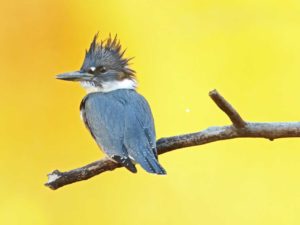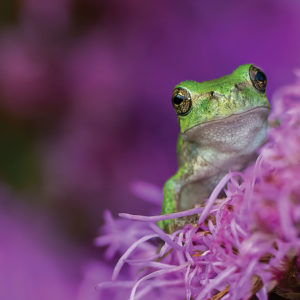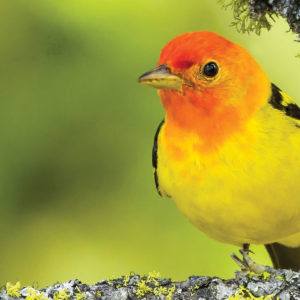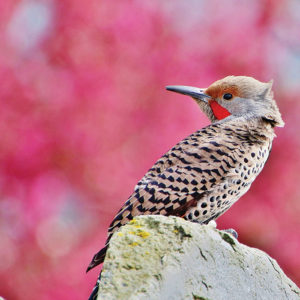The Belted Kingfisher
This month’s calendar image is a stunning photo of a Belted Kingfisher. The shot was captured in autumn by Tim Hopwood in the Inglewood Bird Sanctuary in Calgary. We believe that this photograph truly captured a Belted Kingfisher in its natural element – perched above a body of water, on the lookout for fish and ready for flight.
We recognize Belted Kingfishers by their blue-gray feathers and fine, white spotting on their wings and tail, white underparts, and their large heads that have a crest on the top and back. They have a stocky build, with short legs, and a medium length, and square-tipped tail. Another discerning characteristic of the Belted Kingfisher is its loud rattling call – which can often be heard when it flies quickly up and down rivers and shorelines where it feeds and nests.
Where is it found?
This large water kingfisher lives near streams, rivers, ponds, lakes and estuaries. It spends much of its time searching for small fish from its perch of choice along the edges. Belted Kingfishers nest in burrows that they dig into soft earthen banks, and favour those consisting of higher contents of sand than clay. Their nest is usually adjacent to or directly over water, and in a horizontal tunnel made in a river bank or sand bank and excavated by both parents.
Did you know that the Belted Kingfisher is native to North America? It its winters in areas where the water doesn’t freeze in order to have continual access to their aquatic foods. Beyond small fish, Belted Kingfishers also eat crayfish, frogs, tadpoles, and aquatic insects.
The Belted Kingfisher’s breeding habitat is near inland bodies of waters or coasts across most of Canada, Alaska and the United States. They migrate from the northern parts of its range to the southern United States, Mexico, Central America, and the West Indies in winter.
Interesting Facts about the Belted Kingfisher
- Contrary to many bird species, the Belted Kingfisher is one of the few bird species in which the female is more brightly coloured than the male.
- As nestlings, Belted Kingfishers have acidic stomachs that help them digest bones, fish scales, and arthropod shells.
- Both parents feed their young. At first, they give them partially digested fish, and later, whole fish. Interestingly, the male may make more feeding visits than the female. The young leave the nest between 27-29 days after hatching.
- In certain regions, human activities (such as the digging of sand & gravel pits) have created nesting sites that have actually stimulated population growth and enhanced opportunities for range expansion. Despite this species’ diet, environmental contaminants do not seem to have affected its productivity as it has with other fish-eating birds.



